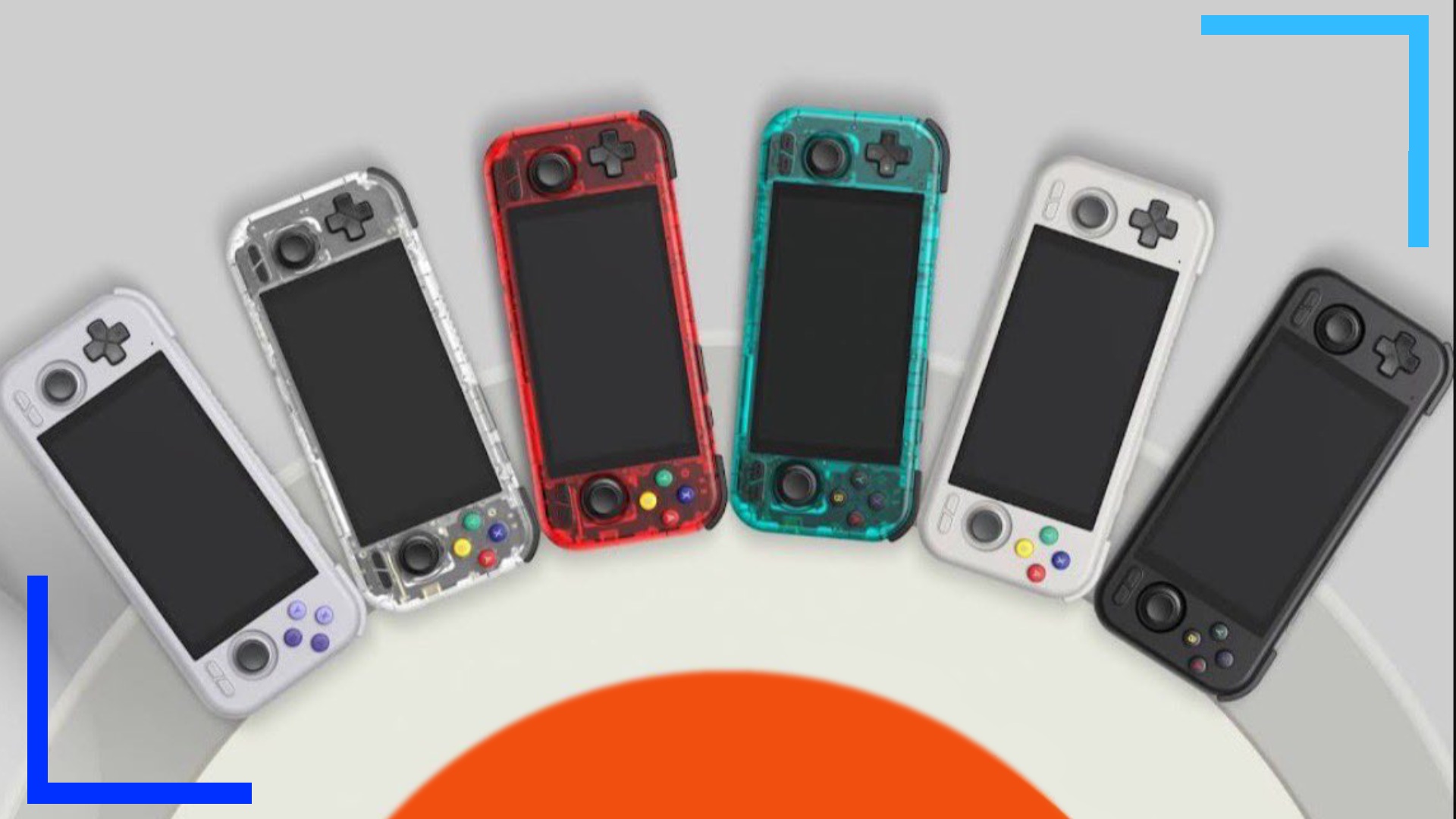The next version of the Retroid Pocket has been revealed and looks to pack a serious punch.
The Retroid Pocket 4 comes in two flavors. The basic model comes equipped with the Dimensity 900 chipset, 4GB of RAM, and will retail for $149 at launch, while the Retroid Pocket 4 Pro utilizes the more advanced Dimnesity 1100 chipset, and comes in at $199.
To put those chipsets in perspective, the Dimensity 900 was featured in 2020’s Samsung Galaxy M51 mobile phone, and the Dimensity 1100 in 2021’s Xiaomi Poco X3 GT. Both are considered budget offerings but are more than enough for old-school emulation potential.
No release date was mentioned, but Retroid did say launch details will arrive at “a later date.” As for colors, you’ll be able to grab the Retroid Pocket 4 in white, black, turquoise, red, and gray. There’s also a model in the style of the North American SNES colors.
What’s Powering the Retroid Pocket 4.
For the CPUs, Retroid has gone with different configurations for each model. The Retroid Pocket 4 base version uses an octa-core processor with two ARM Cortex A78 cores clocked at 2.4 GHz and six A55 cores at 2.0 GHz. For the Retroid Pocket 4 Pro, things are a little more powerful. It’s still an octa-core processor, but two sets of four A78 cores come in at a meatier 2.6 GHz.
To put these differences in perspective in an easy-to-understand way, think of the Retroid Pocket 4 Pro as being considerably faster when processing apps and software than the base 4 model.
I’ve already covered the RAM but it bears repeating. 4GB for the base model, and 8GB for the Pro model. Both versions use DDR4.
One thing I must note to anyone reading this, I’m of the mindset Android devices need a minimum of 4GB of RAM to work. If you want them to work well, then it’s an 8GB of RAM minimum. There are exceptions to that rule, but on the whole, that’s how I come at retro handhelds.
For both versions, internal storage is capped at 128 GB, though there is space for an SD card if you have a lot of games.
Moving on to the display port output, the base model doesn’t feature one. The Pro model can output at up to 1080p over a type-C connector, and both models can do HDMI output at 720p, though.
Lastly, connectivity sees both models make use of Bluetooth 5.2 and Wi-Fi 6. As for the battery, that comes in at 5000 mAh. That’s 500 mAh higher than the previous model.
Retroid Pocket 3 and Retroid Pocket 4 Differences.
With now four different versions out there, it’s worth taking a minute to talk about how the latest model compares with the previous generation.
A Retroid representative said on the official Discord channel that the screen remains the same as the Pocket 3. So that’s a 4.7-inch touchscreen at 450 nits. The big changes between the two generations all come down to RAM and processing power.
The Retroid Pocket 3 ran with two A75 cores alongside six A55 cores at 2.0 GHz. RAM was also maxed out at 4GB. That means the base Pocket 4 has a slight boost by swapping out the two A75 cores for two A78s at 2.4 GHz. That amount won’t be instantly noticeable, but given the price is still low at $149, it’s a nice little boost.
As for the Pocket 4 Pro model, that’s where things get good. Instead of being locked into 4GB of RAM, you’ve got a more luscious 8GB. Likewise, the cores have also seen a big upgrade. Here, the two A75 cores at 2.0 Ghz have been replaced by four A78s at 2.6 Ghz and the six A55s are now four A78s are 2.6 Ghz. That’s a pretty big leap that’s almost certain to help when emulating newer, more powerful systems.
The GPU upgrade is also something I’m impressed by. The Retroid Pocket 3 uses the Mali G52 M2, which released back in 2018, making it a fine choice, but also fairly dated. Conversely, the Retroid Pocket 4 goes with the Mali G68 MC4 that came out two years later in 2020 for the basic model and the Mali G77 MC9, the same chipset found in the Xiaomi Poco M5s.
Conclusion.
There’s no two ways about it, this is a solid upgrade. The goal with new models is to make them more powerful and Retroid has done just that. The design remains the same for the most part, but that isn’t always a bad thing.
What is worth remembering before you get your hopes up, not all emulators support Dimensity chipsets. Yuzu in particular really struggles to work with those chipsets. For up to Dreamcast and some PS2, though, that’s where this device should shine.
It’s the pricing that always surprises me with Retroid handhelds. Neither of the new devices are as cheap as the budget offerings like the Anbernic RG ARC-D, but the price difference is only around $60 for the base Pocket 4, which in terms of specs and power should outright beat the ARC-D.
Of course, I can’t recommend the Retroid Pocket 4 without going hands-on, but if you’re looking for a new retro handheld to keep an eye on, this is definitely it.

